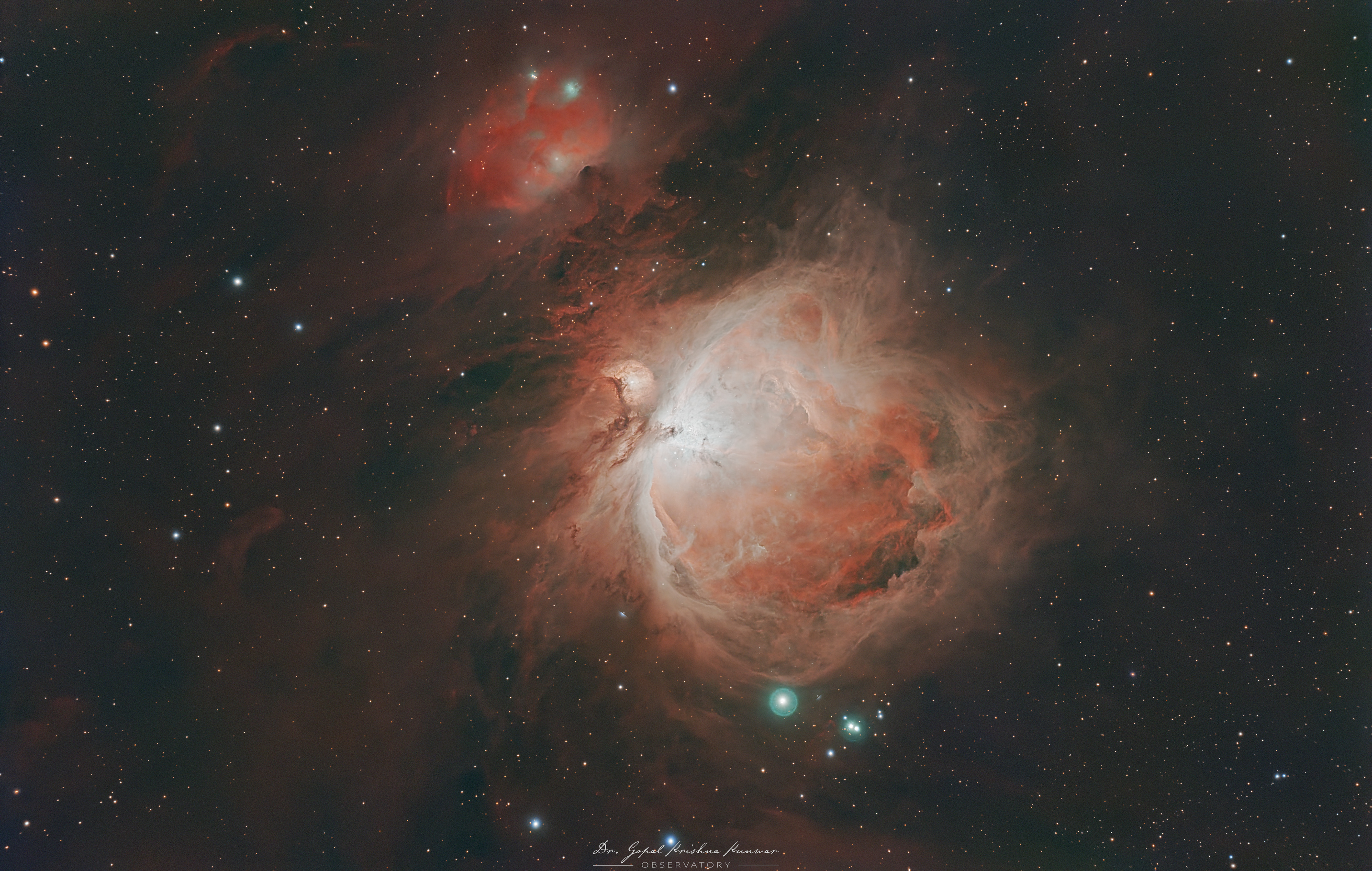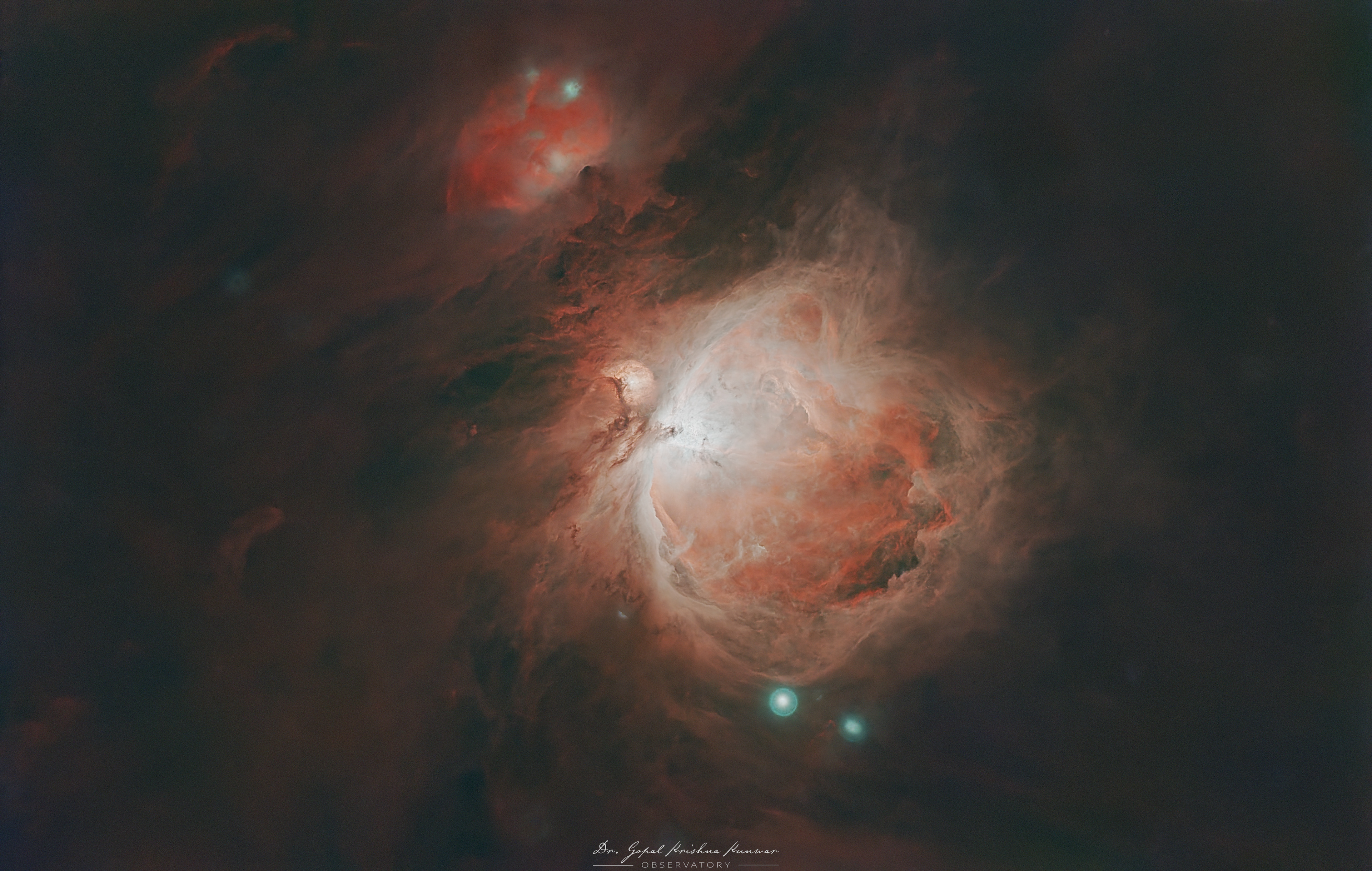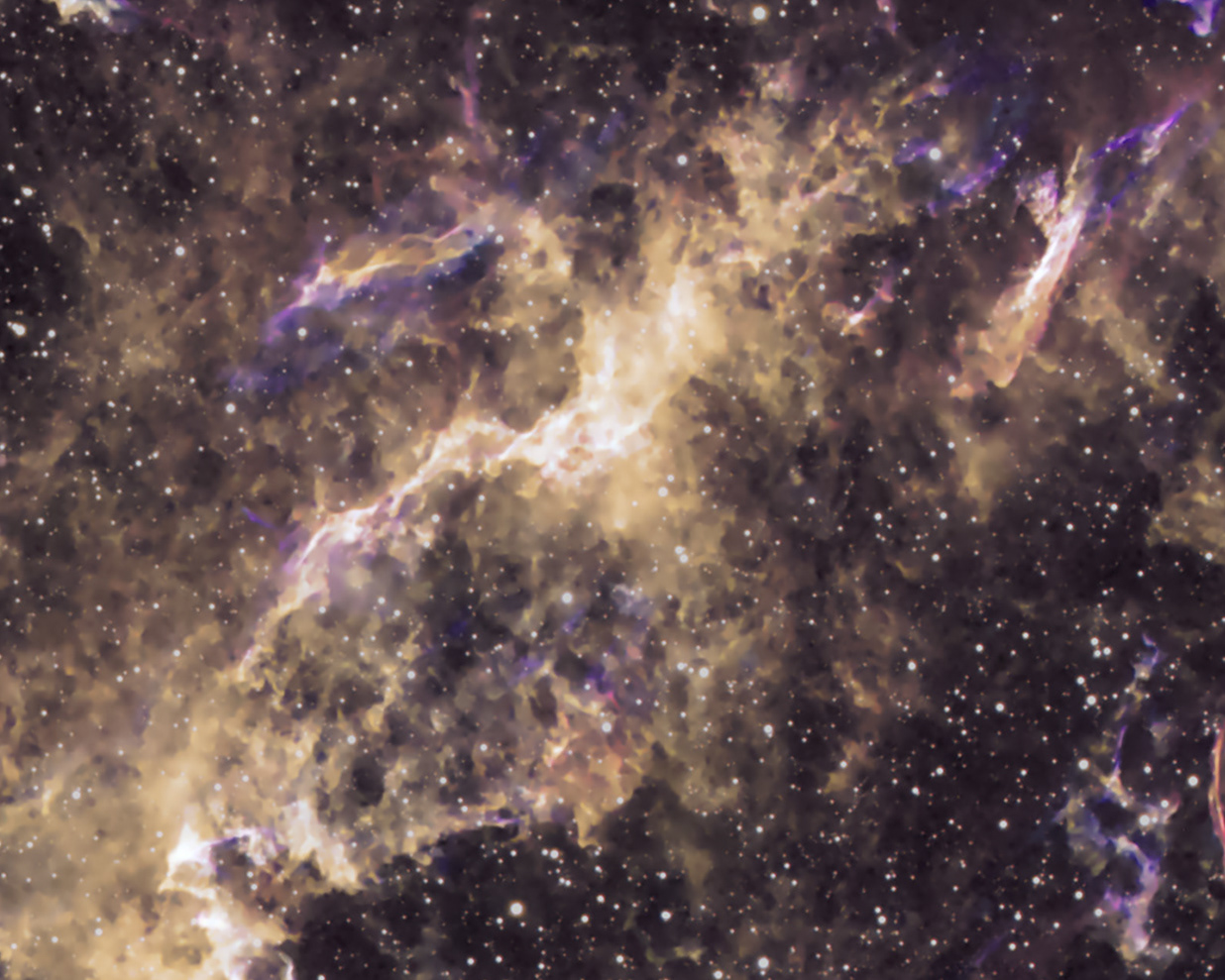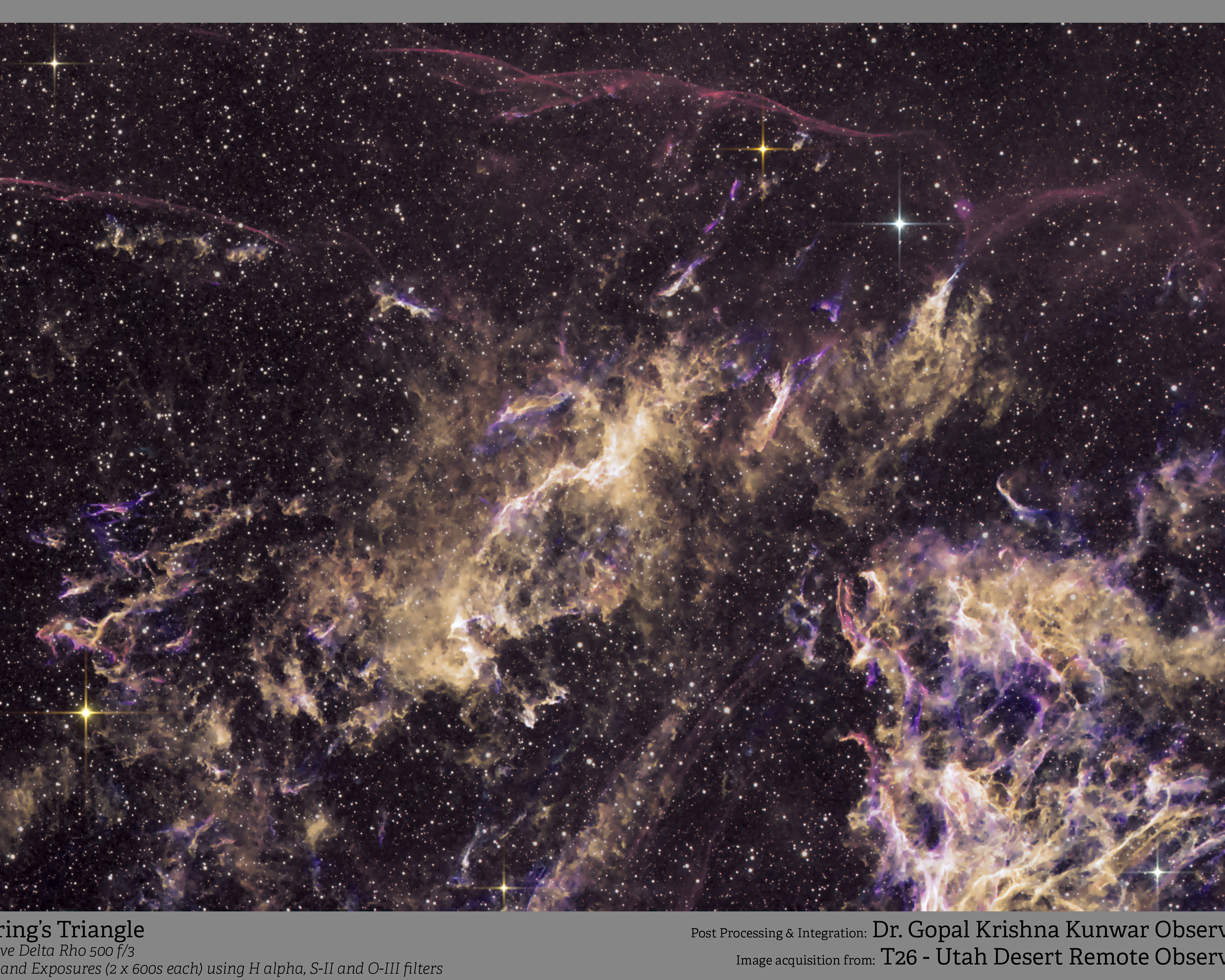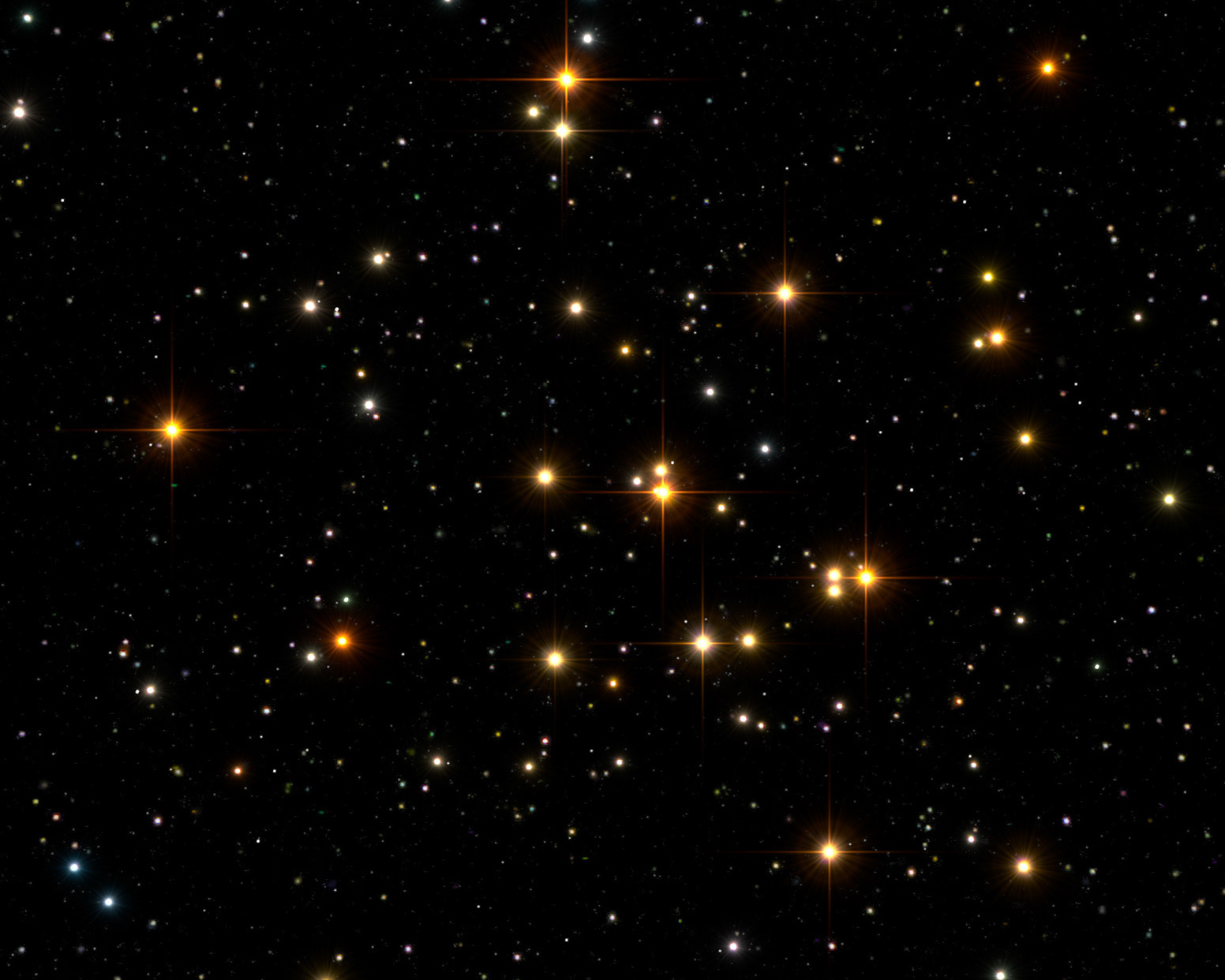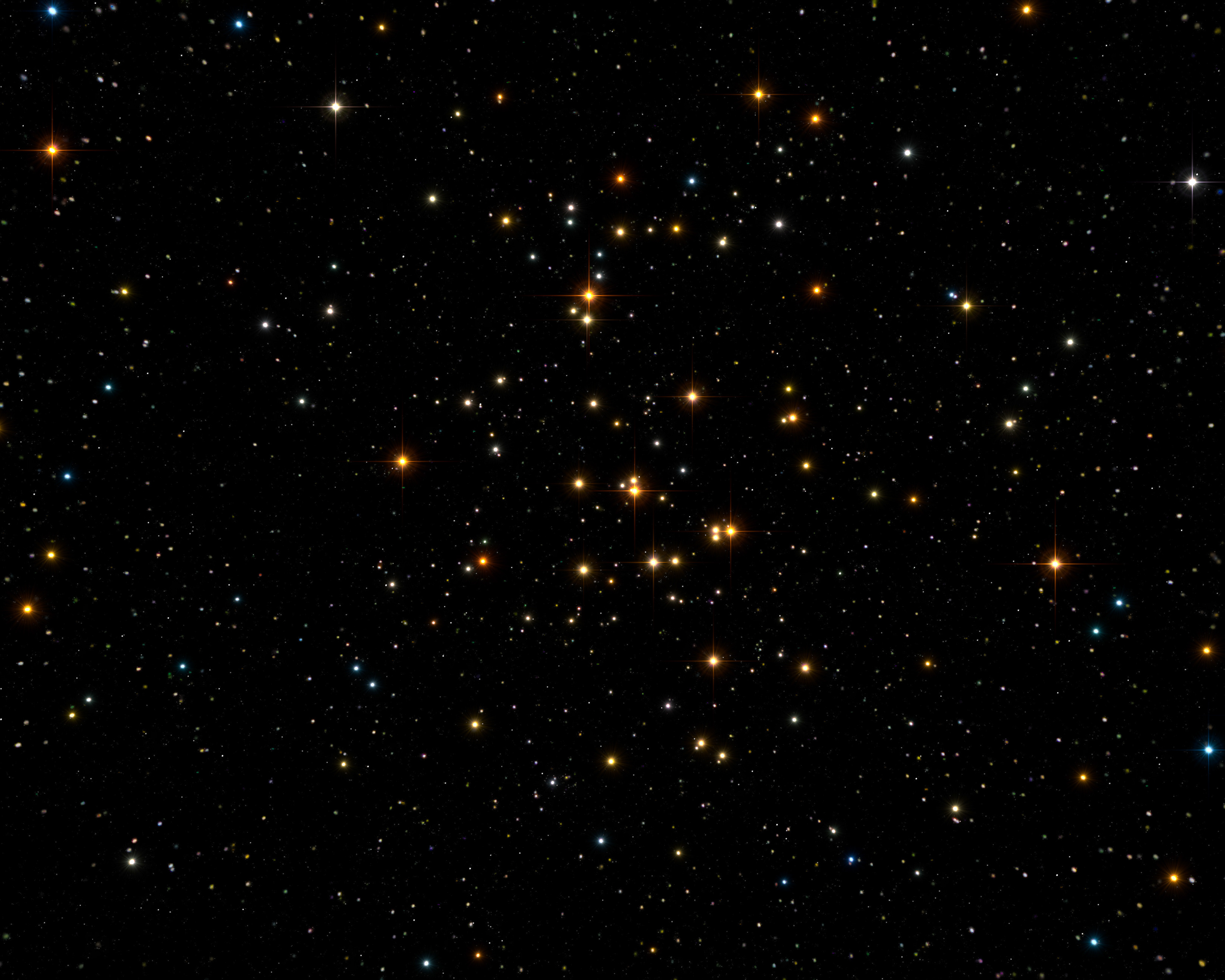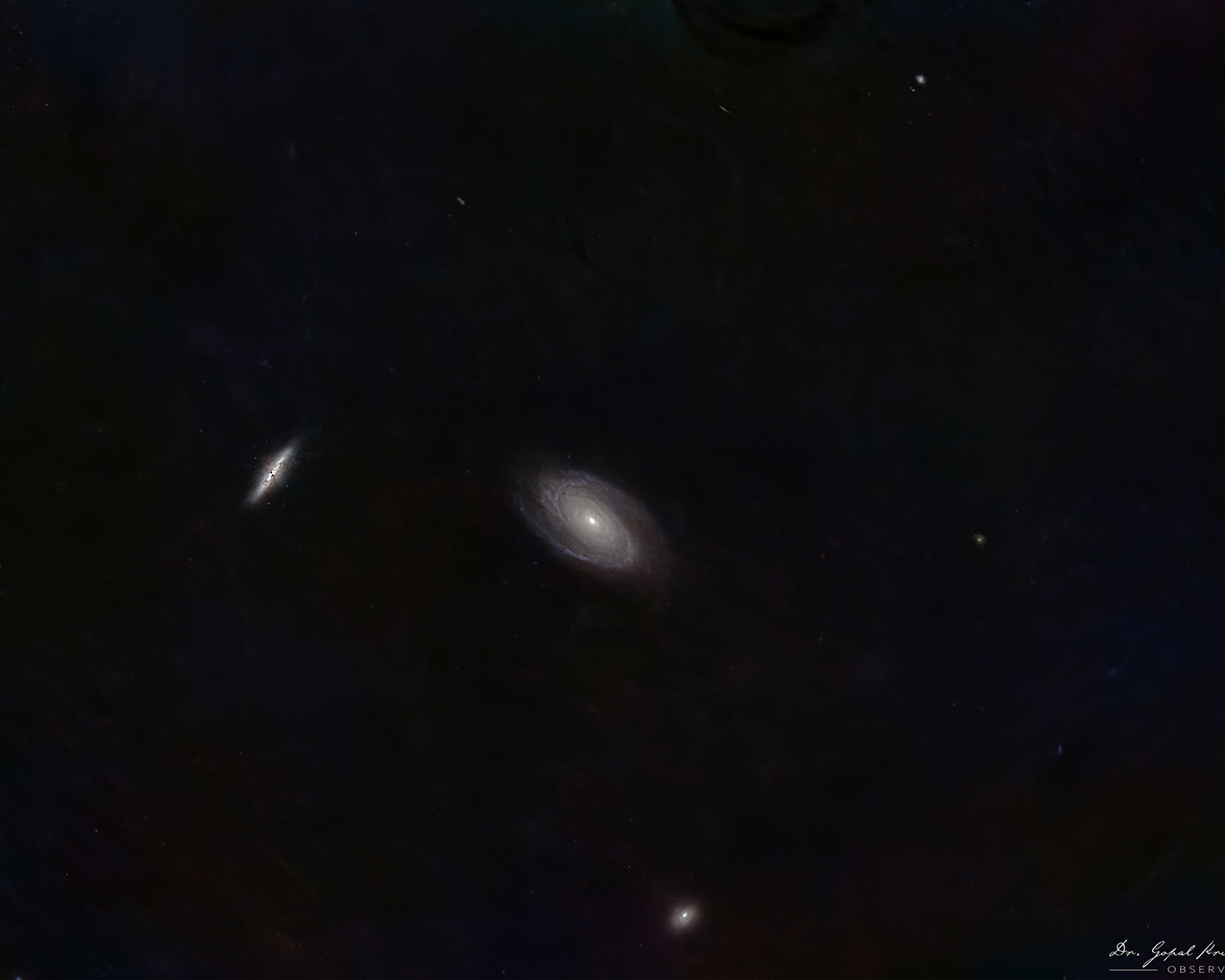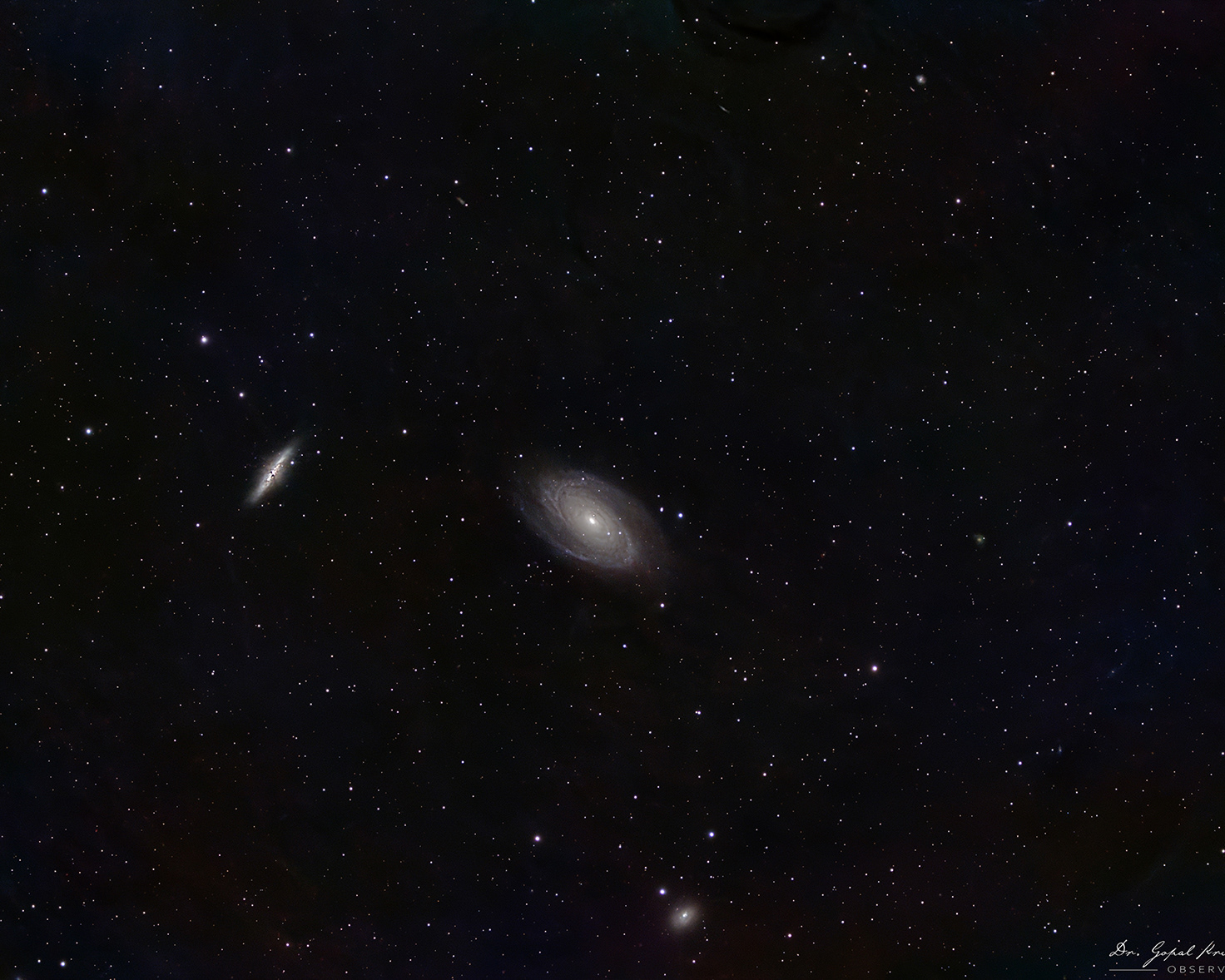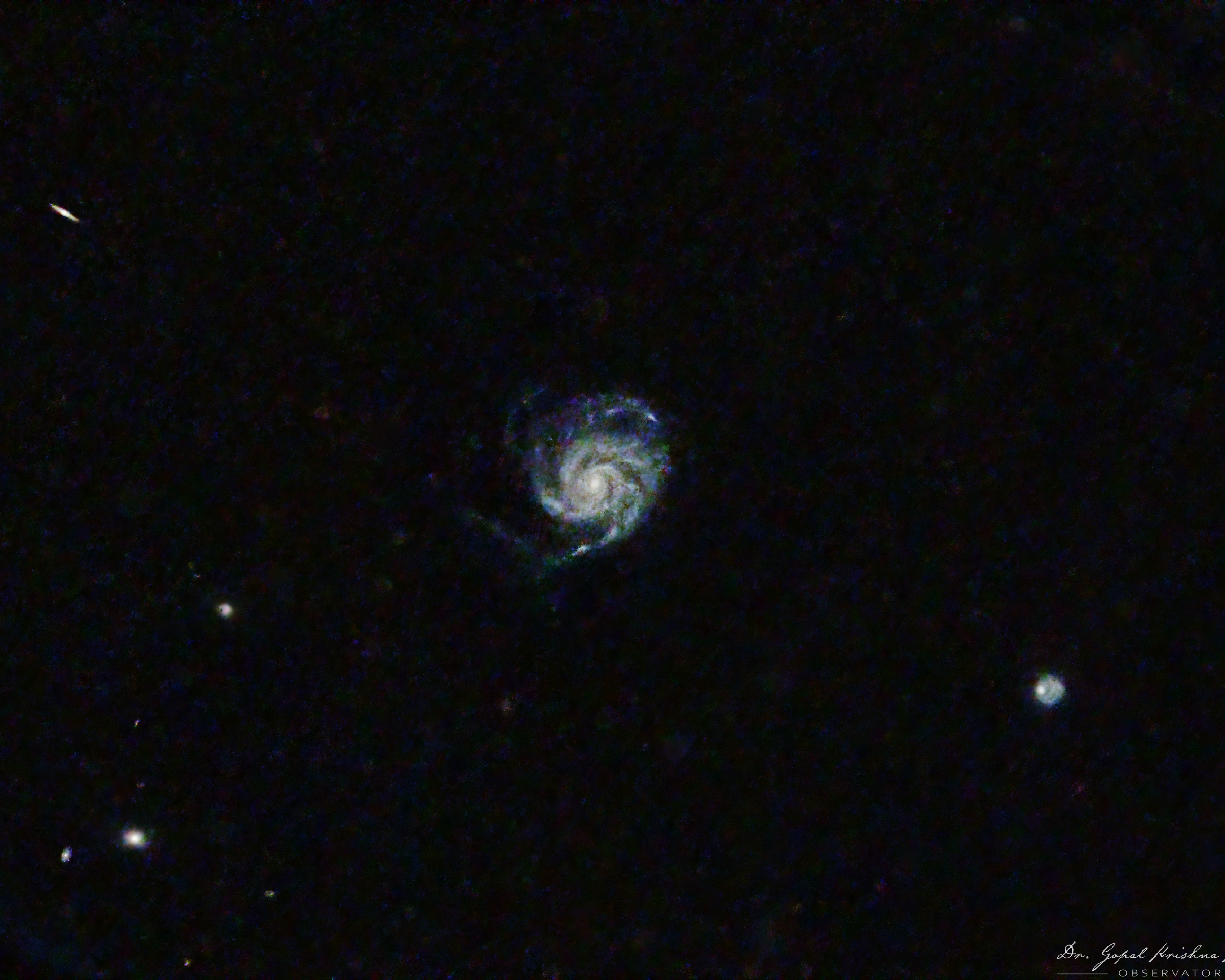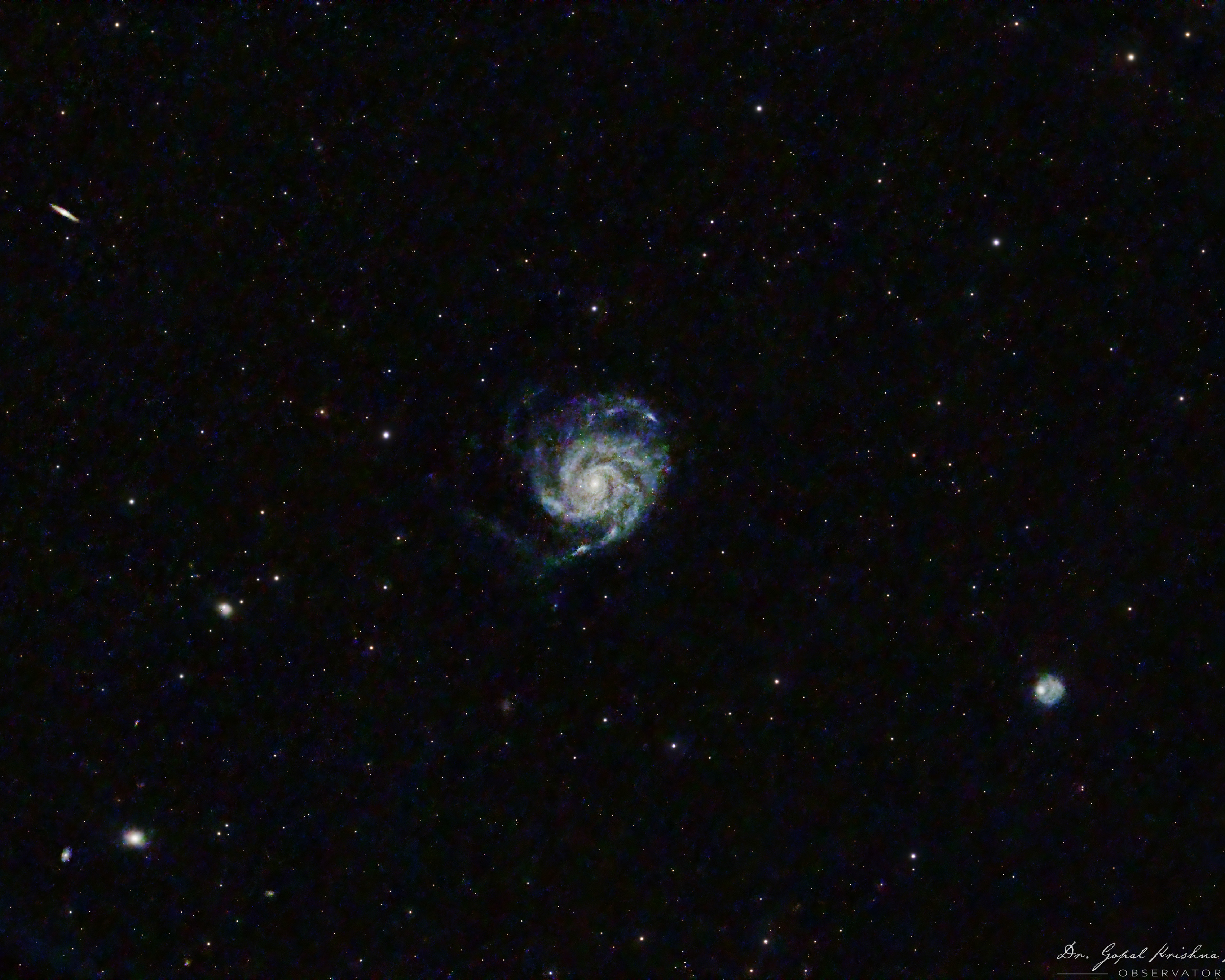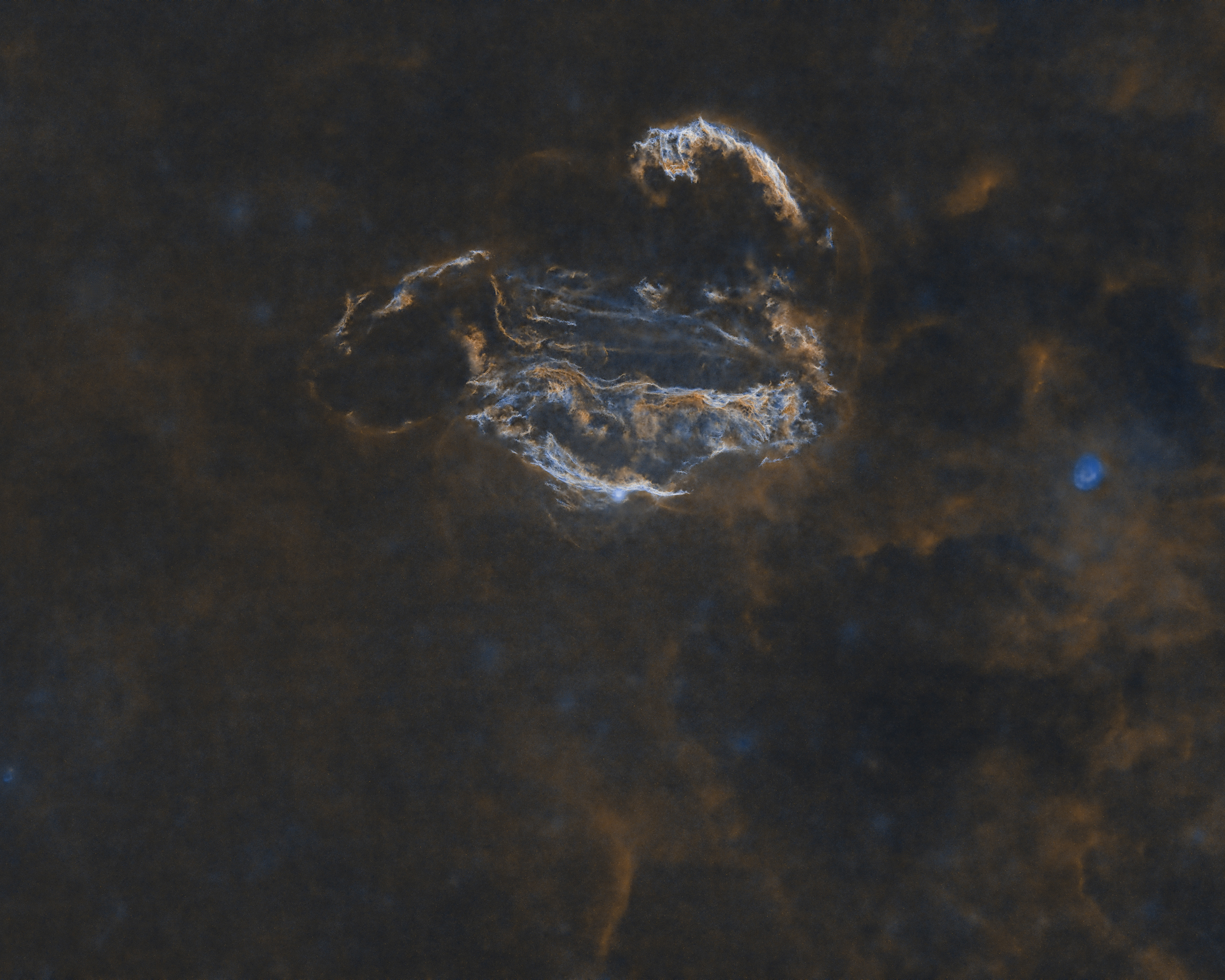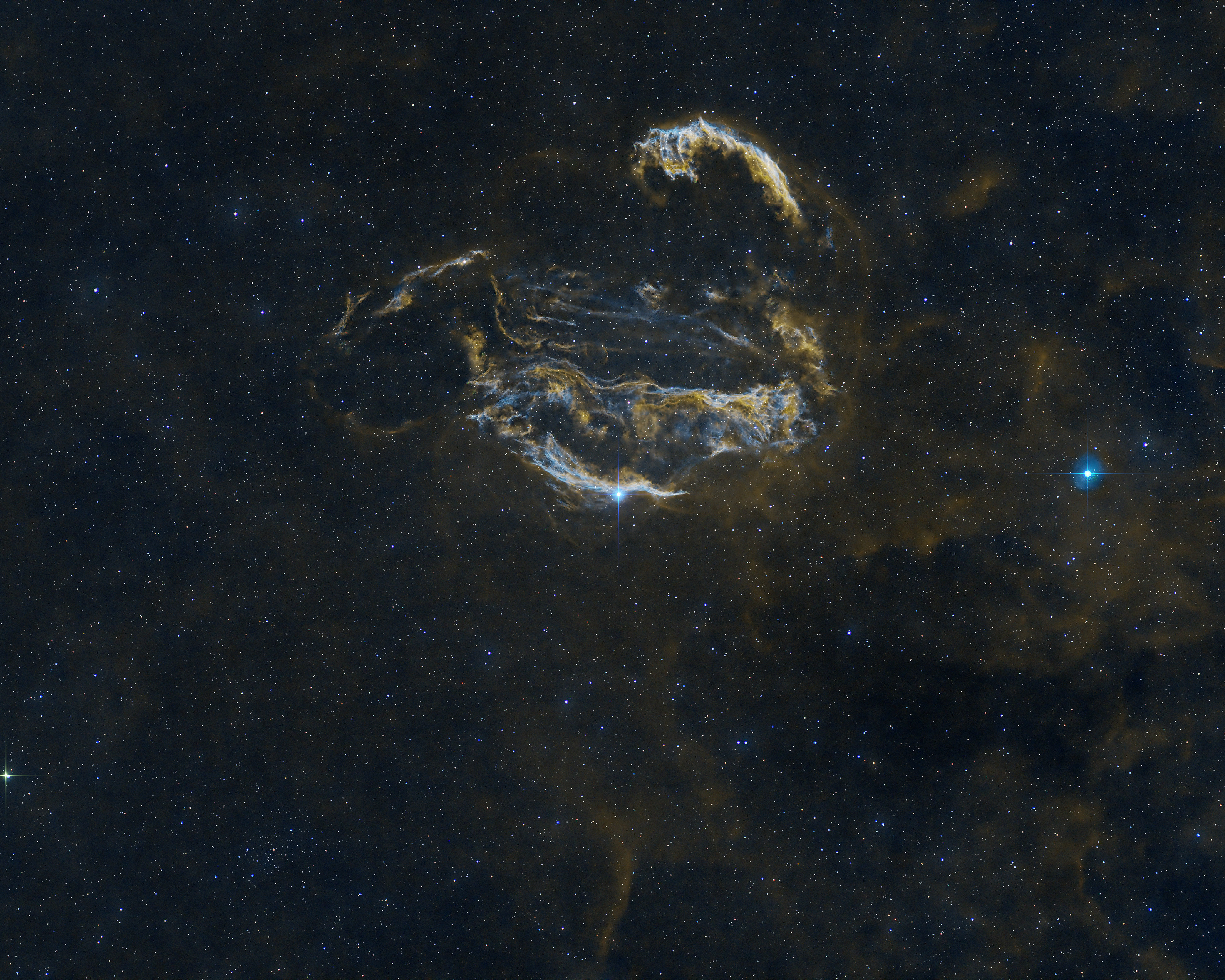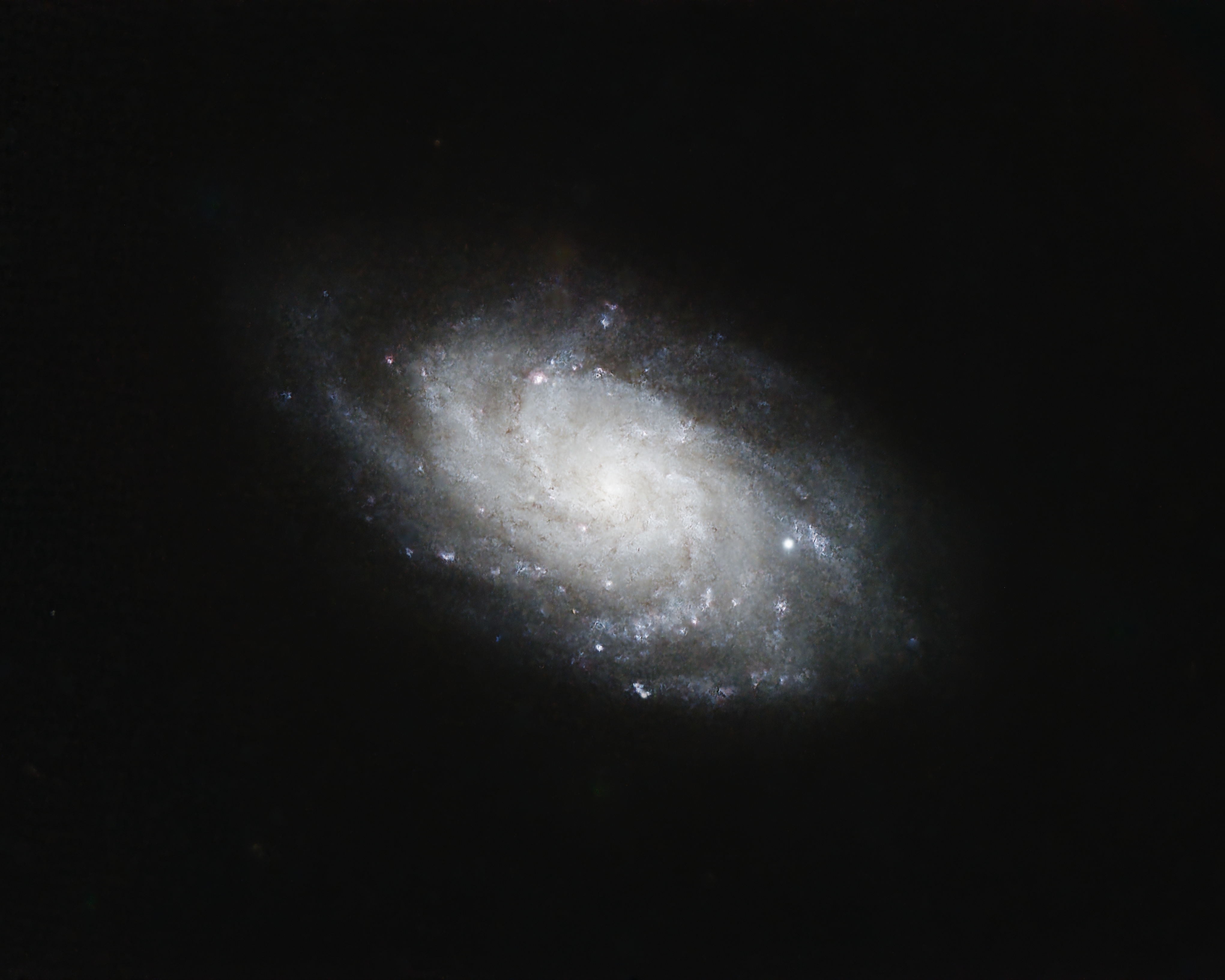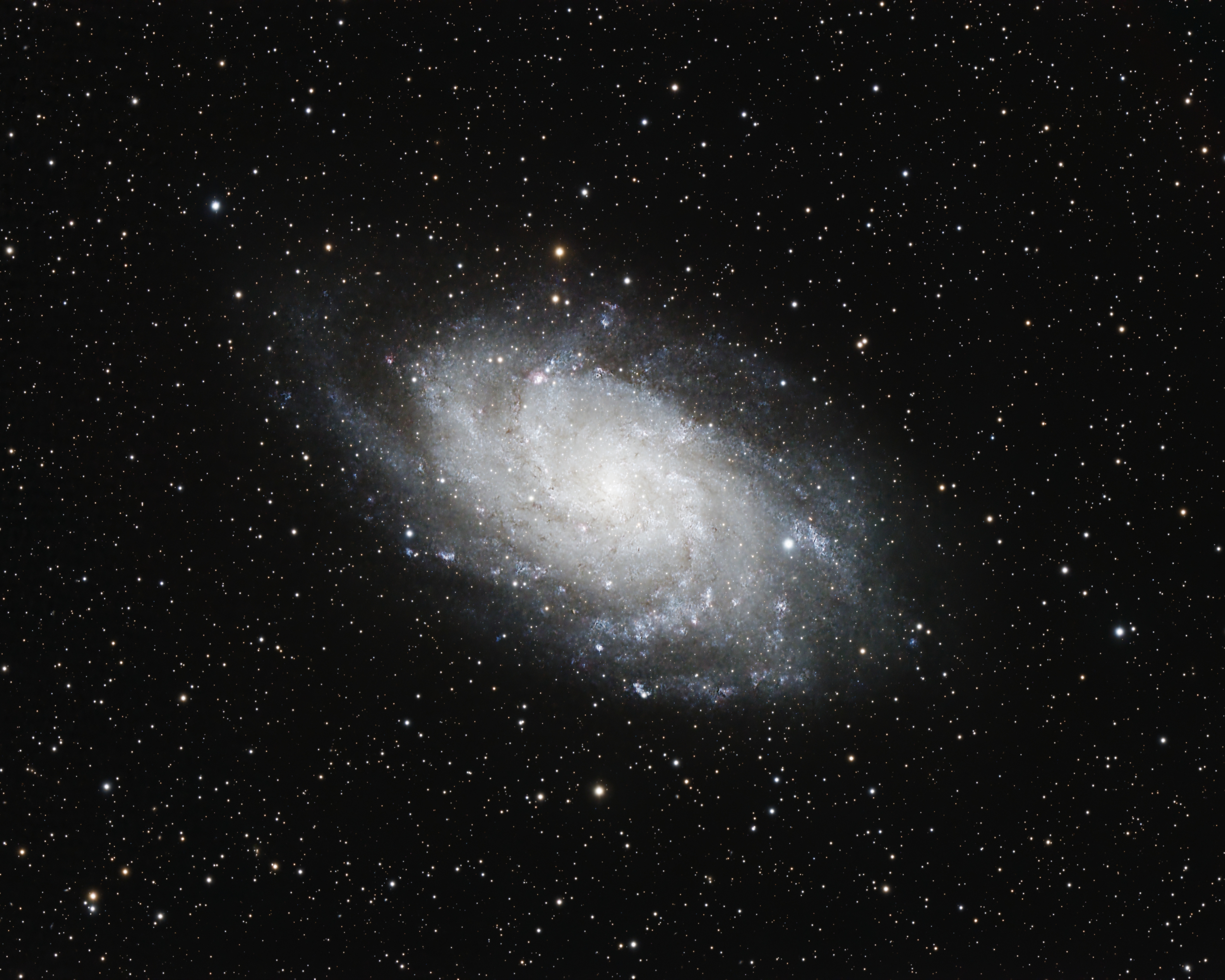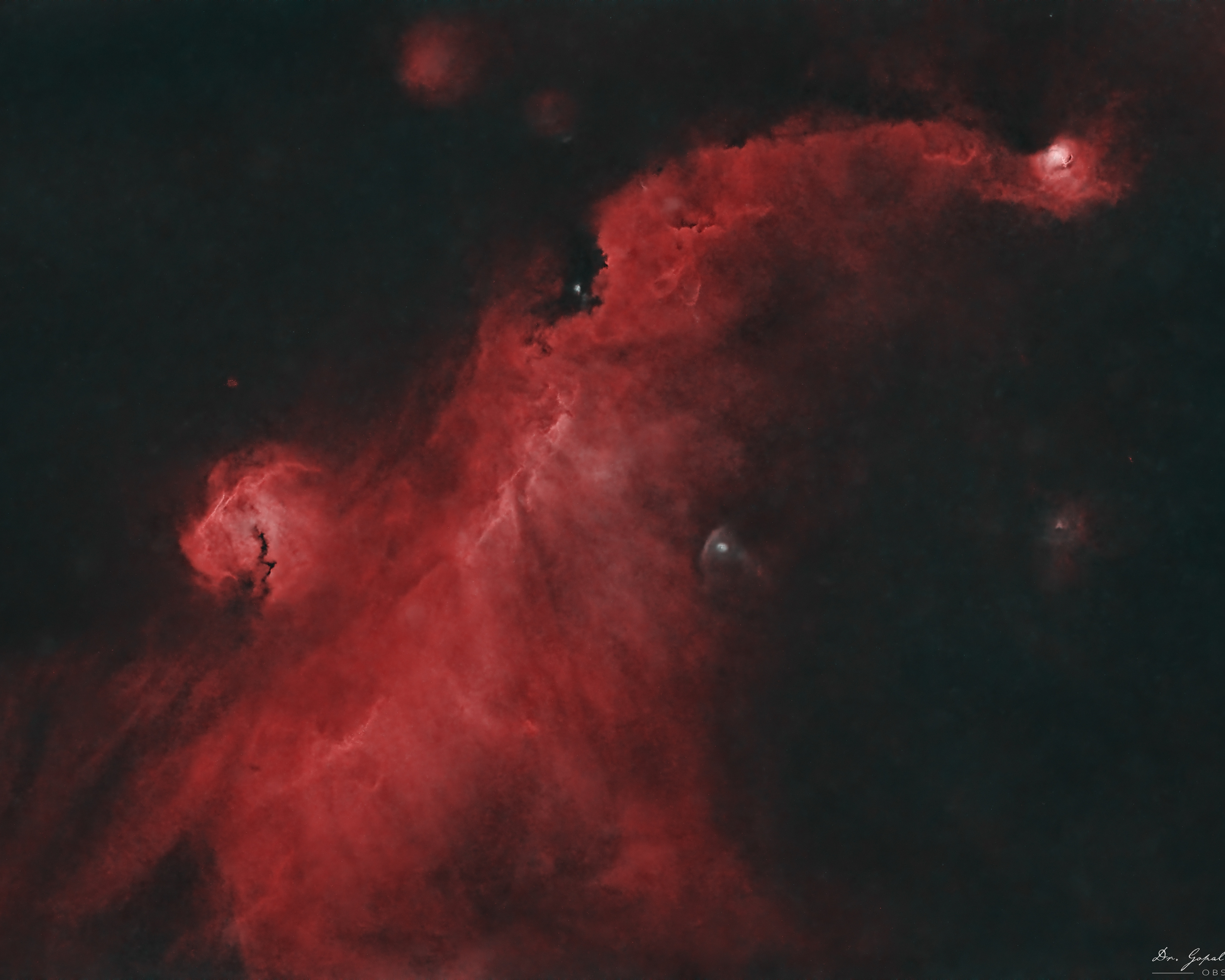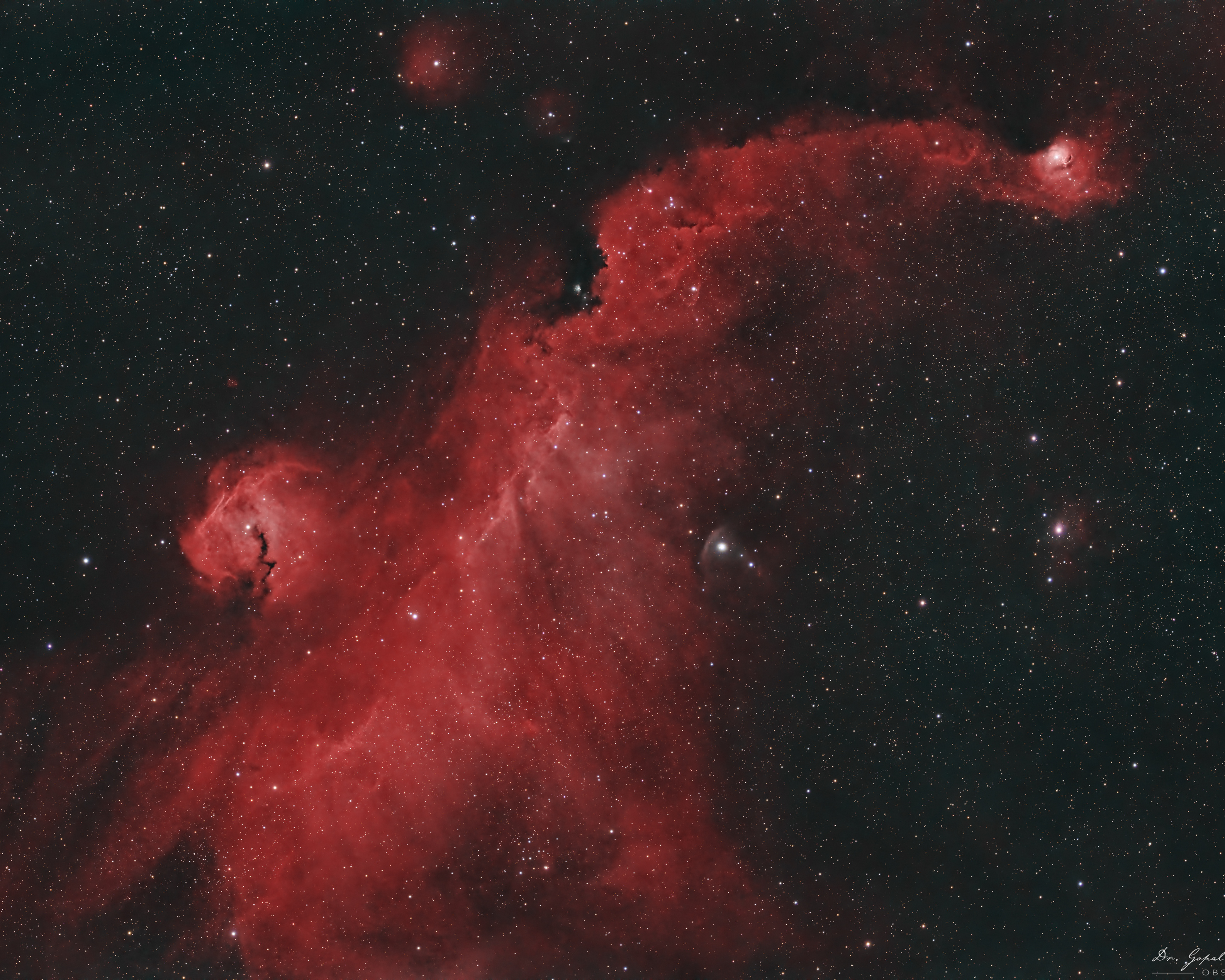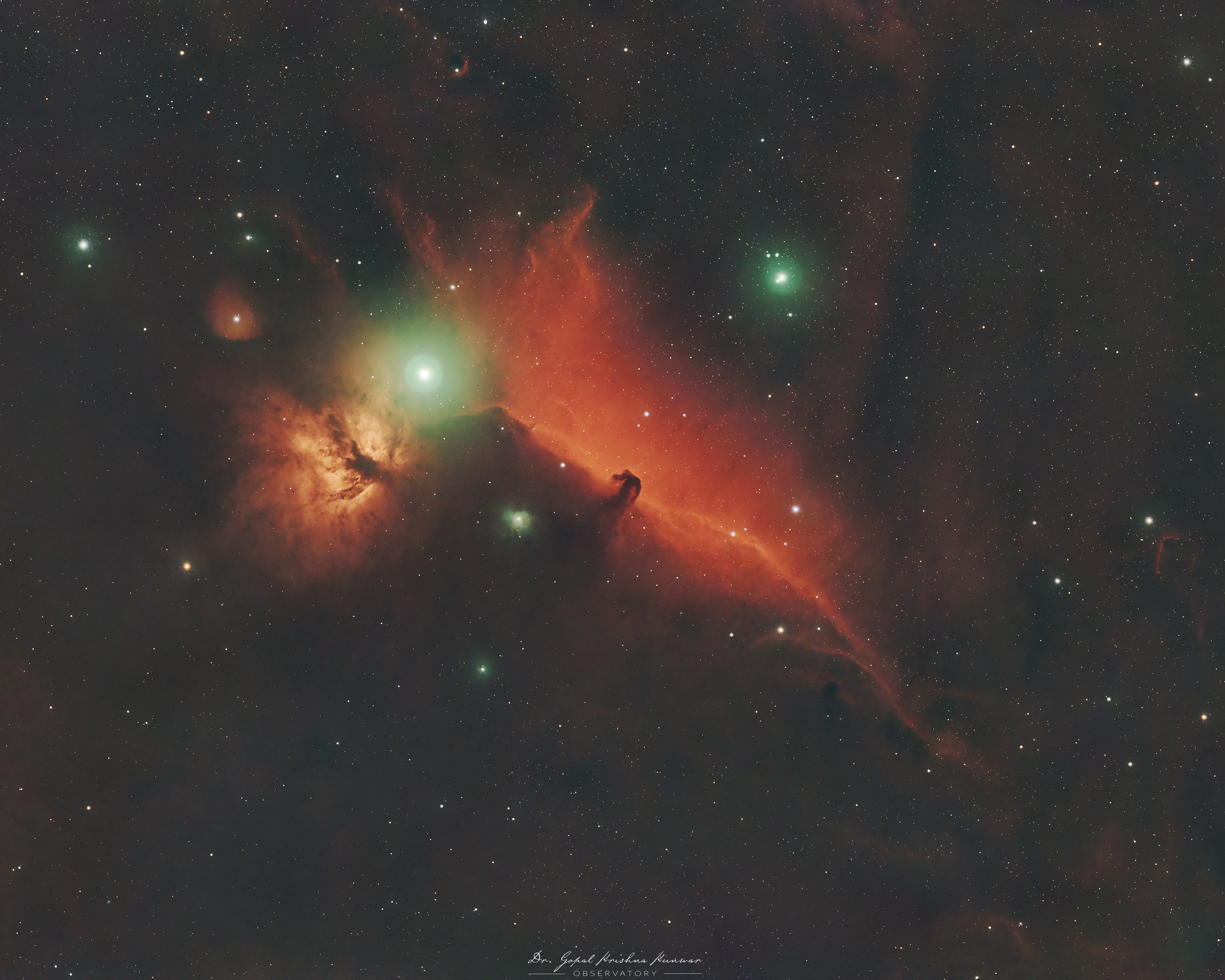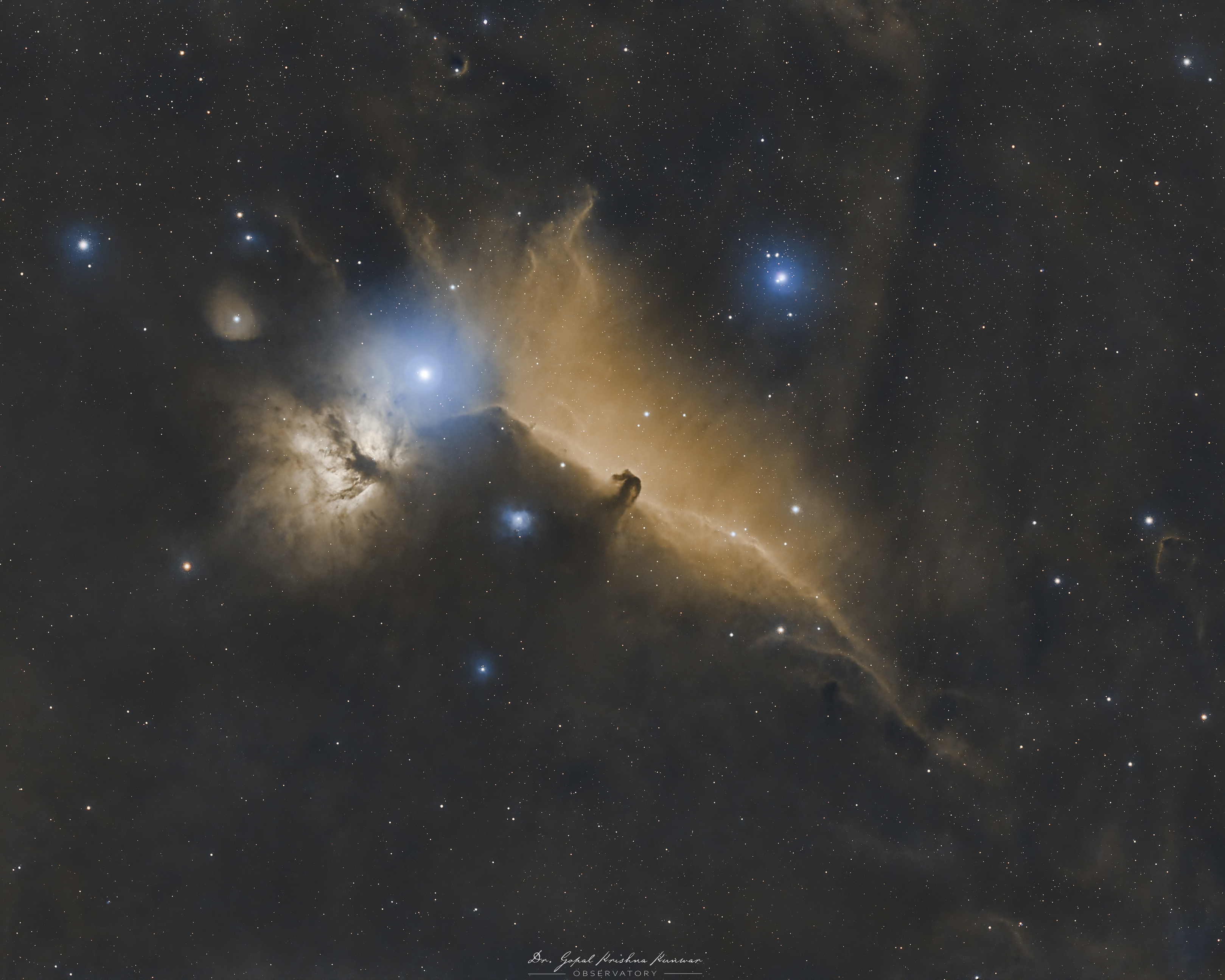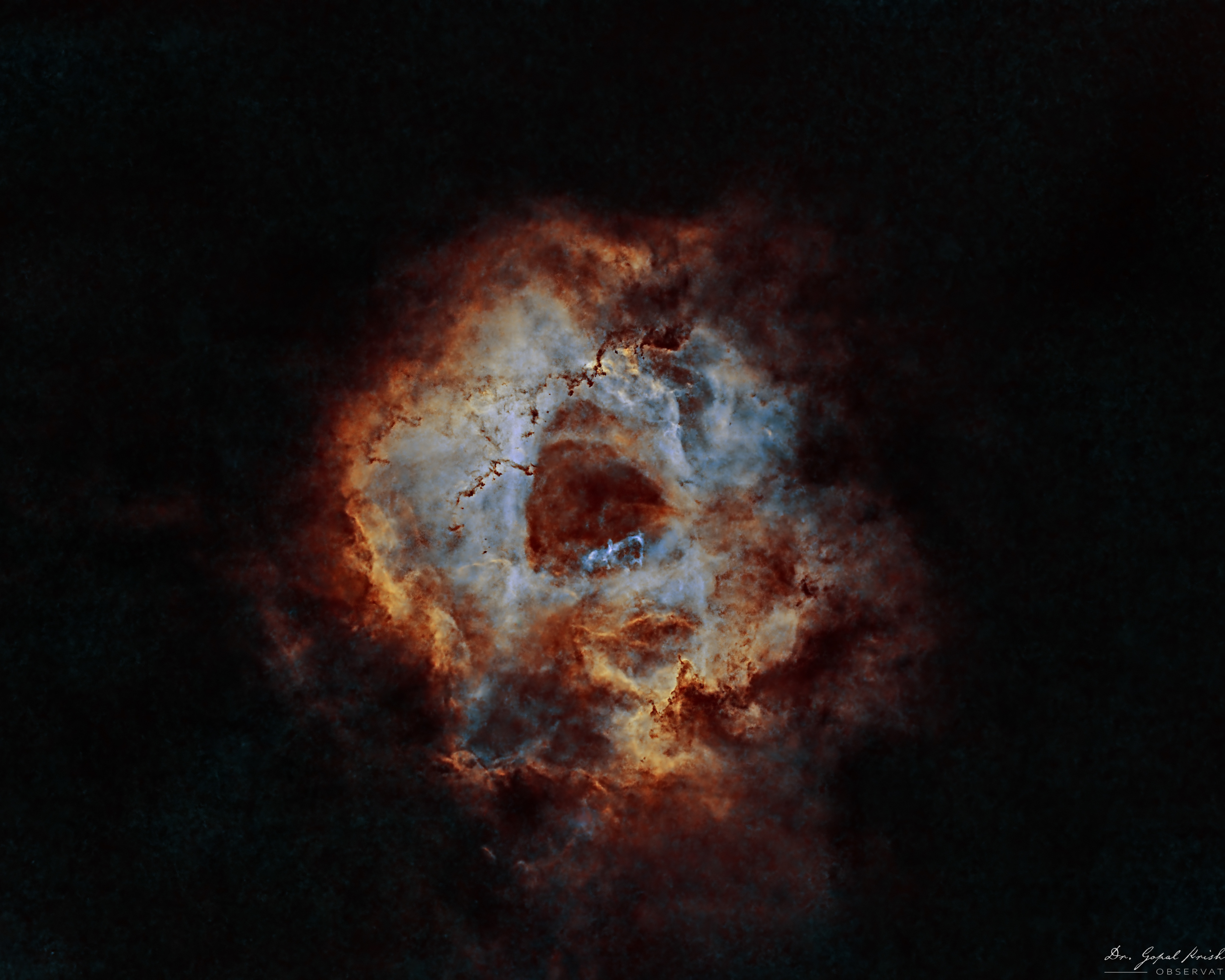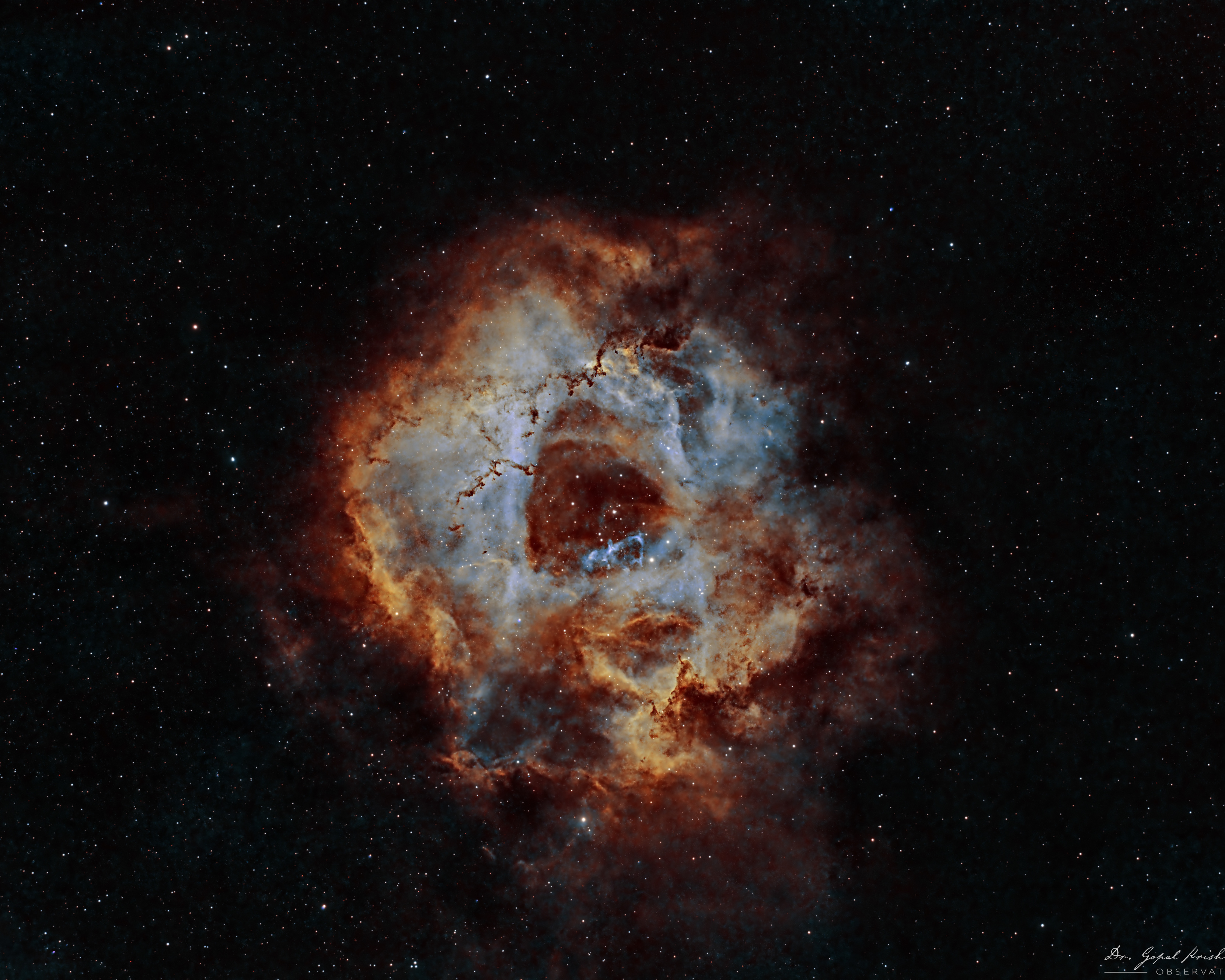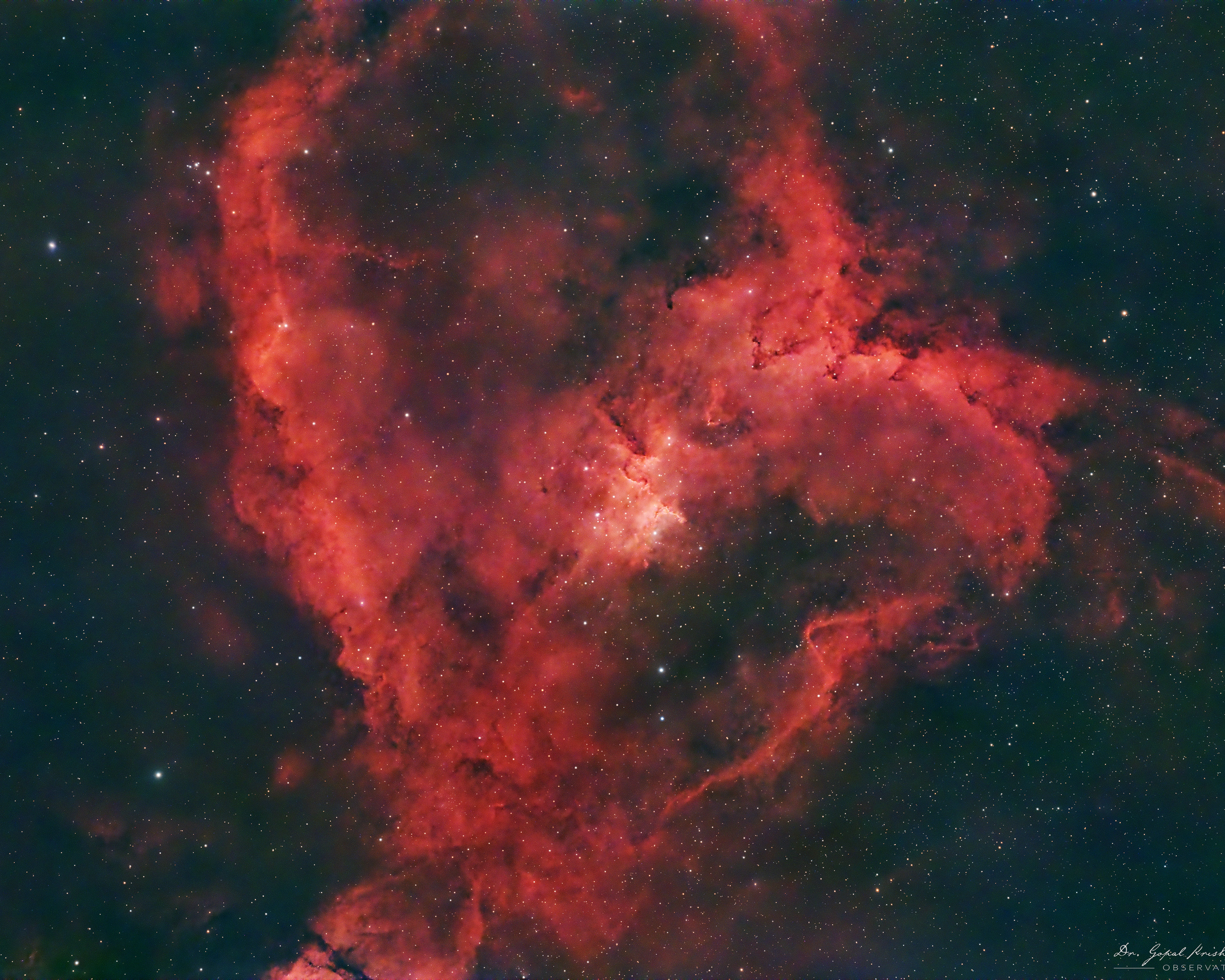The Orion Nebula (M42): A Stellar Nursery in Full Glory
The Orion Nebula, or Messier 42 (M42), is one of the most awe-inspiring celestial objects in the night sky. Located approximately 1,344 light-years away in the Orion constellation, this vast star-forming region spans about 24 light-years. Its vibrant hues of red, pink, and subtle greens arise from ionized hydrogen, oxygen, and other gases, energized by the intense ultraviolet radiation from young, massive stars within its core. The nebula serves as a stellar nursery, a birthplace of stars and planetary systems.
Nestled within the nebula is the Trapezium Cluster, a group of four massive, young stars located at its heart. These stars—Theta^1 Orionis A, B, C, and D—emit intense ultraviolet radiation, ionizing the surrounding gas and giving the nebula its distinctive glow. The Trapezium stars, though young in astronomical terms (only a few million years old), are already shaping the nebula's evolution through their radiation and stellar winds.
Adjacent to the Trapezium Cluster, we find protoplanetary disks (proplyds), which are the early stages of planetary system formation. These proplyds, discovered by the Hubble Space Telescope, are cocoons of dust and gas orbiting young stars, providing insights into the processes that eventually lead to the birth of planets. Just above the Orion Nebula is another prominent feature, the Running Man Nebula (NGC 1977). This reflection nebula, bathed in bluish hues, contrasts with the emission-dominated M42 and showcases the diversity of nebular phenomena in the Orion Molecular Cloud Complex. Together, these nebulae create a celestial panorama of both beauty and complexity.
The Orion Nebula is also home to massive columns of dust and gas, often referred to as "pillars of creation" on a smaller scale. These structures serve as incubators for new stars, shielded from the harsh radiation of the Trapezium Cluster by their dense outer layers.
Capturing the Beauty of M42: Imaging Techniques
This image was captured using a dual narrowband filter with a one-shot color (OSC) camera, which isolates emissions from hydrogen-alpha (Ha) and oxygen-III (OIII) gases. This specialized filter minimizes the impact of light pollution, making it possible to bring out intricate details even from highly light-polluted Bortle 8 skies. The use of narrowband imaging enhances the visibility of the rich gaseous structures while preserving the nebula's natural color palette.
Unveiling the Dynamic Range of the Nebula
One of the most challenging aspects of imaging the Orion Nebula is managing its extremely high dynamic range. The core of the nebula, illuminated by the Trapezium star cluster, is dazzlingly bright, while the outer dust and gas extend faintly into the background. This image showcases both extremes—the bright core's fine details and the faint nebulosity in the outer regions brought out through post-processing. The high level of detail was achieved using HDR Multiscale transformation and masked stretches to avoid over-saturating the core while stretching the fainter details.
One of the most challenging aspects of imaging the Orion Nebula is managing its extremely high dynamic range. The core of the nebula, illuminated by the Trapezium star cluster, is dazzlingly bright, while the outer dust and gas extend faintly into the background. This image showcases both extremes—the bright core's fine details and the faint nebulosity in the outer regions brought out through post-processing. The high level of detail was achieved using HDR Multiscale transformation and masked stretches to avoid over-saturating the core while stretching the fainter details.
To delve deeper into the technical aspects of this image and explore more of my astrophotography, please visit my professional Astrobin page.
The Orion Nebula (M42): A Cosmic Masterpiece of Star Formation, Captured Over 12 Hours from Bortle 8 Skies
Acquisition details:
Imaging Telescopes: William Optics Gran Turismo 71 / GT71
Imaging Cameras: ZWO ASI294MC Pro
Mount: iOptron CEM40
Filter: Optolong L-eXtreme 2"
Other equipment: ZWO ASIAIR Pro, ZWO EAF
Software: Adobe Photoshop · Pleiades Astrophoto PixInsight
Guiding : William Optics 50mm Guide Scope G50ii, ZWO ASI120MM
Total Integration: 12 hour 12 minutes (3 minute sub-exposures)
Imaging Cameras: ZWO ASI294MC Pro
Mount: iOptron CEM40
Filter: Optolong L-eXtreme 2"
Other equipment: ZWO ASIAIR Pro, ZWO EAF
Software: Adobe Photoshop · Pleiades Astrophoto PixInsight
Guiding : William Optics 50mm Guide Scope G50ii, ZWO ASI120MM
Total Integration: 12 hour 12 minutes (3 minute sub-exposures)

